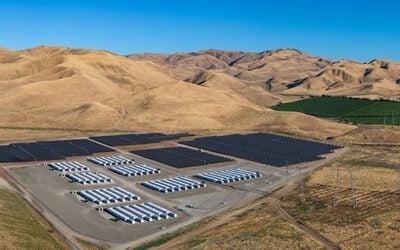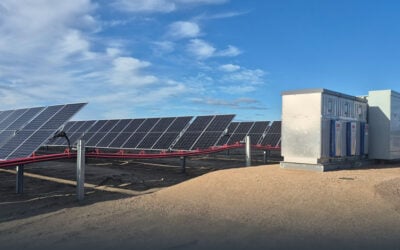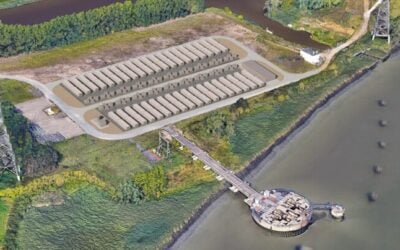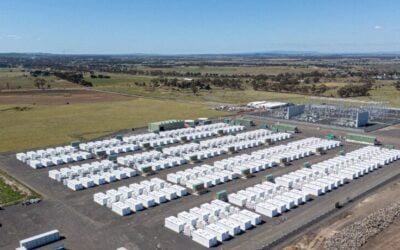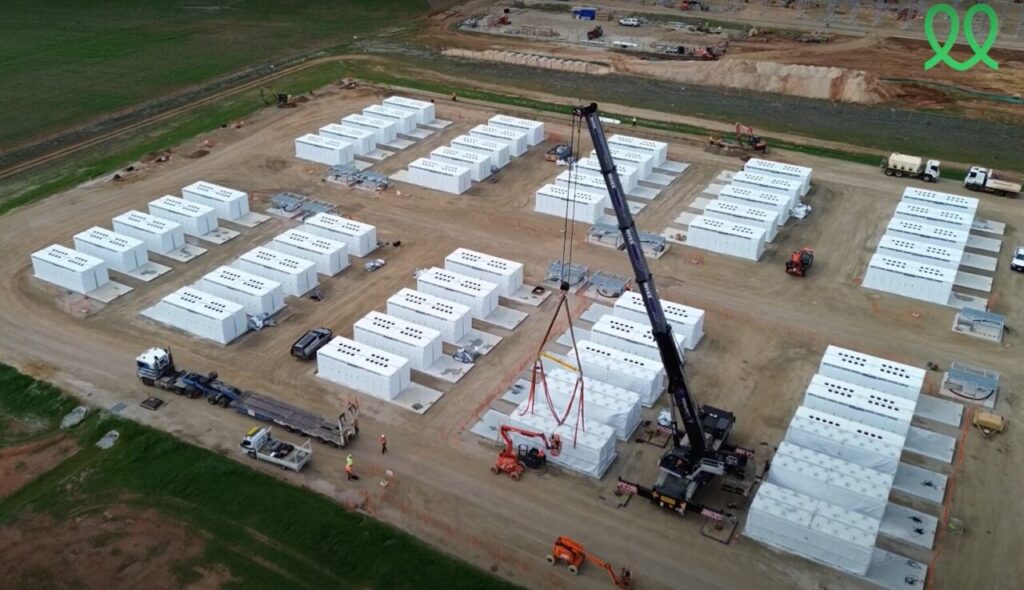
The Australian government has announced the results of the fourth Capacity Investment Scheme (CIS) tender, with 11.4GWh of solar-plus-storage contracts awarded.
In total, 20 projects were successful in the fourth tender round, which awarded long-term contracts for 6.6GW of renewable energy generation.
Australia’s climate change and energy minister, Chris Bowen, confirmed the tender results this morning (9 October). The 20 winning projects span solar, wind and battery storage technologies, with solar-battery hybrid developments featuring prominently in the successful portfolio.
The 6.6GW capacity allocation represents an expansion of renewable energy infrastructure supported through the CIS, building on previous tender rounds that have established the mechanism as a cornerstone of Australia’s clean energy transition policy.
Try Premium for just $1
- Full premium access for the first month at only $1
- Converts to an annual rate after 30 days unless cancelled
- Cancel anytime during the trial period
Premium Benefits
- Expert industry analysis and interviews
- Digital access to PV Tech Power journal
- Exclusive event discounts
Or get the full Premium subscription right away
Or continue reading this article for free
Initially, Tender 4 of the CIS initiative sought 6GW of renewable energy generation in the National Electricity Market (NEM), the country’s biggest interconnected market, spanning Australia’s eastern and southern states and territories.
Bowen confirmed that the tender drew 84 bids representing 25.6GW, more than four times the 6GW target.
The scale of the latest tender outcome reflects growing developer confidence in the scheme’s revenue certainty model and the competitive pricing achieved through the tender process.
Battery energy storage systems (BESS) form a substantial component of the winning project portfolio, with hybrid solar-plus-storage developments demonstrating strong competitiveness in the tender evaluation.
The government said the projects will provide more than 12,000 construction jobs and over 1,000 long-term maintenance roles during the 20-year life of the assets, with around AU$17 billion (US$11.2 billion) in local investment, including around AU$1 billion in Australian steel.
Together, the successful projects have also committed an estimated AU$291 million in shared community benefits and AU$348 million in First Nations benefits.
Solar-plus-storage wins big in CIS Tender 4
The 20 successful projects will contribute to grid services, including capacity provision, frequency regulation, and voltage support, as Australia’s electricity system transitions toward renewable energy dominance.
Battery storage components within the winning portfolio will provide essential grid stability services during variable renewable energy generation periods, supporting system reliability as coal-fired power stations retire.
Specifically, 12 of the 20 projects feature some form of BESS, which will provide 3.5GW/11.4GWh of energy storage capacity in total. The government has released the complete list of 20 successful projects (below).
| Project | Proponent | Technology | Generation | Battery storage | State/Location |
| Bell Bay Wind Farm | Equis | Wind | 224MW | N/A | TAS |
| Bendemeer Energy Hub | Athena Energy Australia | Solar-plus-storage | 252MW | 150MW/300MWh | NSW |
| Bundey BESS and Solar | Genaspi Energy Group | Solar-plus-storage | 240MW | 300MW/1,200MWh | SA |
| Carmody’s Hill Wind Farm | Aula Energy | Wind | 247MW | N/A | SA |
| Corop Solar Farm and BESS | BNRG Leeson | Solar-plus-storage | 230MW | 290MW/704MWh | VIC |
| Derby Solar Project | Sungrow | Solar-plus-storage | 95MW | 95MW/ 210MWh | VIC |
| Dinawan Wind Farm (Stage 1) | Spark Renewables | Wind | 357MW | N/A | NSW |
| Gawara Baya | Windlab | Wind-plus storage | 399MW | 104MW/217MWh | QLD |
| Guthrie’s Gap Solar Power Station | Edify Energy | Solar-plus-storage | 300MW | 300MW/1,200MWh | QLD |
| Hexham Wind Farm | AGL | Wind | 600MW | N/A | VIC |
| Liverpool Range Wind Stage 1 | Tilt Renewables | Wind | 634MW | N/A | NSW |
| Lower Wonga Solar Farm | Lightsource bp | Solar | 281MW | N/A | QLD |
| Merino Solar Farm | EDPR | Solar-plus-storage | 450MW | 450MW/1,800MWh | NSW |
| Middlebrook Solar Farm | TotalEnergies Total Energies Renewables Australia Pty Ltd | Solar-plus-storage | 363MW | 320MW/813MWh | NSW |
| Moah Creek Wind Farm | Central Queensland Power (CQP) | Wind | 360MW | N/A | QLD |
| Nowingi Solar Power Station | Edify Energy | Solar-plus-storage | 300MW | 300MW/1,200MWh | VIC |
| Punchs Creek Solar Farm | EDPR | Solar-plus-storage | 400MW | 400MW/1,600MWh | QLD |
| Smoky Creek Solar Power Station | Edify Energy | Solar-plus-storage | 300MW | 300MW/1,200MWh | QLD |
| Tallawang Solar Hybrid | Potentia Energy | Solar-plus-storage | 500MW | 500MW/1,000MWh | NSW |
| Willogoleche 2 Wind Farm | ENGIE and Foresight | Wind | 108MW | N/A | SA |
Edify Energy emerged as a major winner with three large solar-plus-storage projects across Queensland and Victoria.
The company’s Guthrie’s Gap Solar Power Station, Nowingi Solar Power Station, and Smoky Creek Solar Power Station each feature 300MW of solar generation paired with 300MW/1,200MWh battery systems, representing 3,600MWh of energy storage.
Overall, the successful battery systems demonstrate varying duration profiles, with 4-hour systems representing the most common configuration across six projects.
EDPR’s Merino Solar Farm in New South Wales has the largest energy storage allocation at 450MW/1,800MWh, while the developers’ Punchs Creek Solar Farm in Queensland incorporates 400MW/1,600MWh of BESS.
Wind projects in the successful portfolio average a larger individual scale compared to solar-plus-storage sites, with AGL’s 600MW Hexham Wind Farm in Victoria and Tilt Renewables’ 634MW Liverpool Range Wind Stage 1 in New South Wales representing the largest single-technology developments.
The geographic distribution of the successful CIS projects spans five states, with New South Wales and Queensland each securing six projects totalling 2.4GW and 1.8GW, respectively. Victoria received four projects totalling 1.5GW, while South Australia and Tasmania secured three and one projects, respectively.
Established developers feature prominently in the results, with Lightsource bp, TotalEnergies and AGL securing individual projects alongside emerging players including Sungrow and Potentia Energy. The developer mix demonstrates international and domestic investment in Australia’s renewable energy transition.
The prevalence of 4-hour battery duration across multiple projects suggests developers are targeting extended grid services, including peak demand support and renewable energy shifting. This configuration enables battery storage systems to provide dispatchable capacity during evening peak periods when solar generation declines.
Potentia Energy’s Tallawang Solar Hybrid, which recently secured approval from the New South Wales Independent Planning Commission, represents the largest battery storage system, in terms of power output, at 500MW/1,000MWh.
What is the Capacity Investment Scheme?
Australia’s CIS initiative provides long-term revenue contracts, known as Capacity Investment Scheme Agreements (CISAs), that reduce investment risk for renewable energy and storage projects. This enables developers to secure financing for large-scale developments.
The competitive tender process selects projects based on their ability to deliver reliable, low-cost clean energy services to the grid, with successful bidders entering into capacity investment scheme agreements with the federal government.
Previous tender rounds have established the scheme’s effectiveness in attracting investment to Australia’s renewable energy sector. Over 15GWh of energy storage was successful in Tender 3, demonstrating consistent market appetite for grid-scale storage deployment under the revenue support framework.
The government has progressively expanded the scheme’s scope since its initial implementation. Australia uplifted the Capacity Investment Scheme target to 40GW of renewables and energy storage, reflecting recognition of the scale of investment required to meet national renewable energy targets and replace retiring fossil fuel generation capacity.
The scheme’s operational framework has been refined recently to improve efficiency and market participation. Australia’s Capacity Investment Scheme was streamlined, and four tenders were unveiled for 2025, indicating the government’s commitment to maintaining regular competitive processes for project selection and revenue support allocation.
While the eastern states celebrate the success of the fourth CIS tender, attention is now shifting west with two new tenders currently open for Western Australia’s Wholesale Electricity Market (WEM).
Launched on 26 August 2025, Tender 5 targets 1.6GW of renewable energy generation capacity, while Tender 6 seeks 2.4GWh of dispatchable capacity, including battery storage with a minimum 2-hour duration.
Both tenders will be the first to implement a streamlined single-stage bidding process, consolidating technical and financial proposals. This process is intended to shorten the tender from nine months to approximately six months. This approach is designed to increase efficiency and support the timely signing of CISAs.

